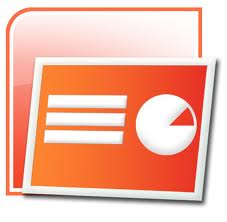Ionic Bonding and
Ionic Compound Nomenclature
This unit covers all aspects of ionic compounds. First, students learn about ionic bonding and what makes a compound ionic, including electronegativity differences. Next, students learn how to name binary ionic compounds, ionic compounds with transition metals, polyatomic ionic compounds, and acids.
Ionic Bonding and Nomenclature Powerpoint Lecture
 |
Purpose: This Powerpoint goes through some practice problems dealing with calculating electronegativity difference, dissociation of ionic compounds in water, and the naming of all types of ionic compounds: binary, polyatomic, ones with transition metal cations, and acids.
Essential Concepts: Ions, ionic compounds, ionic bonding, electronegativity, dissociation, cations, anions, binary ionic nomenclature, transition metals, binary acids, ternary acids, polyatomic compounds.
Ionic Bonding and Nomenclature Notes Outline
Purpose: This is a fillable notes outline to accompany the ionic bonding and nomenclature Powerpoint. These are helpful to use if you have students who struggle with effective note-taking and either write nothing down at all or try to write everything (and fail to listen to actual lecture).
Essential Concepts: Periodic table, metals, nonmetals, metalloids, periods, families, groups, alkali metals, alkaline earth metals, transition metals, halogens, noble gases, lanthanides, actinides.
Electronegativity and Dissociation Equations
Purpose: This is a worksheet that first shows students how to calculate electronegativity difference and use that as a way to identify ionic compounds. Second, students will write and balance ionic dissociation equations.
Essential Concepts: Ionic bonding, ionic compounds, cations, anions, electronegativity difference, dissociation.
Valence Electrons and Ionic Compounds
This worksheet uses Bohr models to demonstrate how cations and anions are formed, reviews ionic notation, then has students start writing formulas for ionic compounds based on their oxidation numbers.
Essential concepts: Ions, ion notation, anions, cations, Bohr model, oxidation number, ionic compounds.
Chemthink - Ionic Bonds and Ionic Notation
Purpose: These worksheets accompany the Chemthink modules on ionic bonding and ionic notation. The ionic bonding module reviews how cations and anions are formed and why they attract. The ionic notation module covers how oxidation numbers determine the subscript of the formula of an ionic compound
Essential Concepts: Ions, ion notation, anions, cations, Bohr model, oxidation number, ionic compounds.
Mythbusters - Bathtub Electrocution Worksheet
Purpose: This episode of Mythbusters tests the "myth" that dropping an electrified appliance in the bathtub can kill you. This is unlikely with today's appliances because of ground circuit fault interruptors (GCFI) put onto hairdryers and other bathroom appliances but is certainly possible without them in place. Students will learn that pure water itself isn't necessarily a great conductor of electricity, but when ionic compounds (such as the salts found in sweat and urine) dissociate in water, it becomes highly conductive.
Essential Concepts: Ions, dissociation, conductivity, ionic compounds.
Mythbusters - Urinating on the Third Rail
Purpose: This episode of Mythbusters tests the "myth" that urinating on an electrified rail will electrocute a person. This episode covers a lot of the same ground as the bathtub electrocution one, as urine contains many ionic compounds that make it highly conductive. However, urine streams break up before they hit the electrified rail, making electrocution unlikely.
Essential Concepts: Ions, ionic compounds, dissociation, conductivity.
Nomenclature of Simple (Binary) Ionic Compounds
Purpose: This is the first step for chemistry students learning how to name chemical compounds. This worksheet first covers the importance of valence electrons and oxidation number to making ionic compounds, then how they are named.
Essential Concepts: Ions, ionic bonding, ionic compounds, ionic nomenclature, oxidation number, valence electrons.
Nomenclature of Transition Metal Ionic Compounds
Purpose: This is a follow-up to the ionic nomenclature worksheet that introduces transition metals. Students will learn how to assign Roman numerals to transition metals to indicate their charge, and how to use anion charges to figure out the oxidation number of a transition metal.
Essential Concepts: Ions, ionic bonding, ionic compounds, ionic nomenclature, oxidation number, transition metals.
Nomenclature of Polyatomic Ions
Once students are familiar with the steps in naming simple (or monatomic) compounds, they are introduced to polyatomic ions. Students will need to copy of a polyatomic ions reference list with their periodic table to be able to complete this worksheet.
Essential concepts: Ions, ionic bonding, ionic compouds, polyatomic ions, ionic nomenclature.
Nomenclature of Acids
The last, and most difficult step in learning to name ionic compounds is acids. Students often have a lot of difficulty remembering the rules for binary and ternary acids. This worksheet goes over the -ous and -ic rules for ternary acids, as well as the hydro- rule for binary acids. Students will need to copy of a polyatomic ions reference list with their periodic table to be able to complete this worksheet.
Essential concepts: Acid nomenclature, binary acids, ternary acids.
pH Calculations of Strong Acids
Although students in chemistry commonly use pH as a measurement of acidity or alkalinity, they don't have a solid grasp of what the numbers actually mean. In this worksheet, students will do some simple calulations of hydrogen ion concentration using the pH of strong acids.
Essential concepts: Acids, bases, pH, ions
Mythbusters - Breaking Bad Bathtub
Purpose: This episode of Mythbusters tests a famous scene from the TV show Breaking Bad, where Walter and Jesse attempt to dispose of a body by dissolving it in a bathtub containing hydrofluoric acid. Water initially instructs Jesse to get a plastic bin (which will not react with the acid), but Jesse is unable to find one and goes with the ceramic bathtub, which is dissolved by the acid.
Essential Concepts: Acids
Ionic Bonding and Ionic Compound Nomenclature Study Guide
Purpose: Once the instruction for the unit is completed, students can complete this study guide to aid in their preparation for a written test. The study guide is divided into two sections: vocabulary and short answer questions. The vocabulary words can be found scattered throughout the different instructional worksheets from this unit. The short answer questions are conceptual and meant to see if the students are able to apply what they've learned in the unit.
